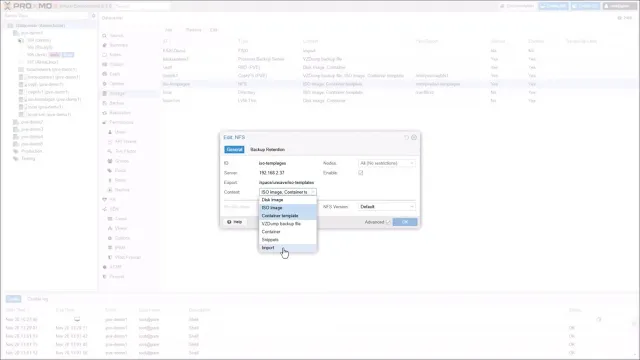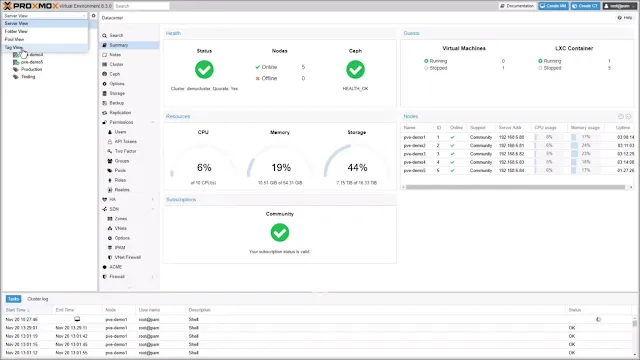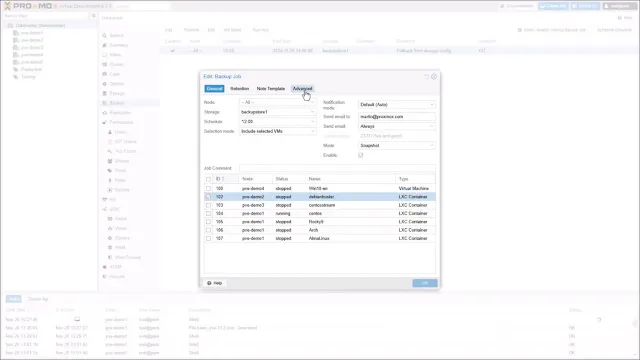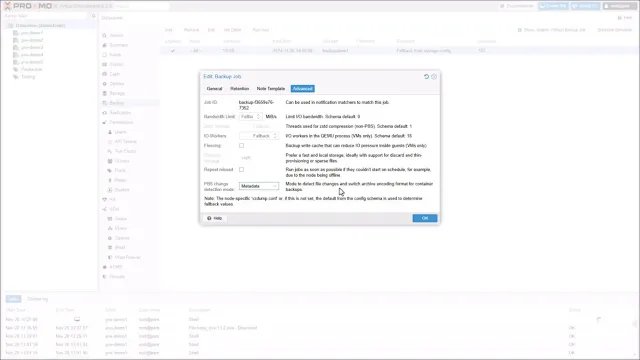Proxmox VE 8.3 New Features with OVA Import
Proxmox has gained tremendous popularity in 2024. So many home lab enthusiasts, SMBs, and enterprise environments are looking at their options with the fallout from VMware by Broadcom. Proxmox has been introducing many new features with each release and are aggressively targeting ones looking at virtualization alternatives or looking to migrate from their existing solution. Proxmox VE 8.3 new features will help to take Proxmox VE Server functionality even further. Let’s take a look at what’s new in this release.
New features in Proxmox VE 8.3
There are many new features with the 8.3 release, including the following:
- Improved OVA and OVF import
- New tag view
- New firewall features
- More efficient backup snapshots
- New language support
Proxmox Virtual Environment (VE) 8.3 introduces an array of innovative features and updates aimed at enhancing usability, flexibility, and efficiency. Built on the robust foundation of Debian 12.8 (Bookworm), this release incorporates a modern Linux kernel, advanced virtualization tools, and a user-friendly interface. Here’s a detailed look at what’s new in Proxmox VE 8.3.
1. Improved OVA and OVF import
One of the features that many like about VMware vSphere is the ability to easily important OVA and OVF files. You can do this easily from the vSphere Client. Now, with Proxmox 8.3, admins can now import Open Virtualization Format (OVF) and Open Virtualization Appliance (OVA) files through the web interface.
Note the following new support with Proxmox VE Server 8.3:
- File-Based Storage Support: You can import directly from file-based storage locations like NFS
- Upload Options: You can upload OVA files from local machine storage or download them from a URL much like we have been able to do in VMware vSphere
2. New tag view
In this release, there is a new Tag View that has been added to the resource tree. Using this view, it provides users with a quick way to organize and monitor VMs and containers according to their tags.
- Custom tags: Admins can add custom tags to their VMs and containers for better categorization of virtual resources
- Grouped display: The new view arranges your virtual guests by tags and makes it easier to navigate and manage large environments with many virtual resources
This feature simplifies administrative tasks and provides a clear visual representation of your infrastructure. Below shows where you choose the new Tag View.
3. New firewall features
New firewall features in the Proxmox VE 8.3 update include support for forwarded network traffic at the host and VNet level with Proxmox SDN.
Note the following:
- IP Sets for VNets: The Software-Defined Networking (SDN) in Proxmox now automatically generates IP sets for each VNet. This includes subnet and DHCP ranges.
- Improved management of security features: Users can fine-tune firewall rules to secure their environment comprehensively.
Admins will need to enable the firewall to use these features. Below you see the IPsets:
Adding a new rule.
4. More efficient backup snapshots
Backups have gotten better in Proxmox 8.3. Now the metadata and data of the Proxmox backups are separated into two different archives.
Note the benefits of doing this:
- Incremental backup optimization: This introduces changed block tracking in Proxmox by referencing metadata from the previous backup snapshot and identifying unchanged files. Once those files are identified, these are skipped which means backup runtime is significant less and much more efficient.
- Less time: This optimization is extremely welcome in large environments and with frequently backed-up VMs
Below, we are editing a backup job.
Here you can see the PBS change detection mode set to metadata.
- Linux Kernel: It includes the Linux Kernel Version 6.8 as the default stable kernel and 6.11 available as an opt-in.
- Ceph: You can now choose between Ceph Reef 18.2 and Ceph Squid 19.2 for HCI storage
- QEMU 9.0: New virtualization features with QEMU 9.0
- OpenZFS 2.2.6: The latest OpenZFS filesystem and volume management















